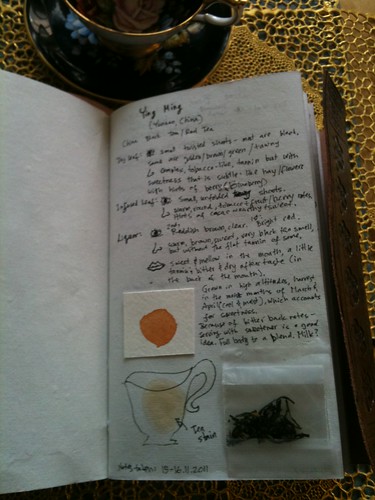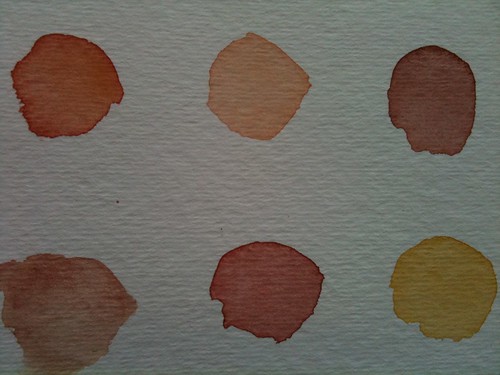Tea Journal: Ying Ming

Last week I've began a tea tasting journal, and this is the first page of it!
Now that the Zangvil tea is ready, I have to prepare for the re-launch of my other teas. I'm reformulating them, as the tea master who created the other teas for me has moved on to doing other things. This gives me the opportunity to deepen my understanding and appreciation for teas. And since my next big undertaking is reformulating Roses et Chocolat tea, I figured I'll start with black China teas.
There is a bit of a disagreements between cultures as to the colours of teas. What we call in the West "black" is called "red" by the Chinese, who discovered the tea and invented most of the methods known to us now for harvesting, processing (oxidizing, rolling, fermenting...) and perfuming tea leaves.
We call red tea "black" because we refer to the tea leaves before infusion. The Chinese call it red based on the tawny reddish colour they develop after being steeped. True black teas will take on a black colour after steeping - for example: Pu-erh tea, which is fully fermented, and actually improves with age, like a fine wine. I find this fascinating!
I began my journal with the first page you are seeing here, and have decided to begin with Ying Ming tea. Although tea tasting requires observing the appearance of the dry leaf, infused leaf (how it looks after being wet) and the colour of the liquor (the "tea" beverage itself) - I will focus what I share here with you on the aroma and fragrance of tea. I have to say though, that I'm immensely enjoying the visual aspects of tea tasting, and have also created colour swatches with watercolour to record the various colours of liquor!

I was a bit weary yet curious to start with black teas (or red, if you wish), as I don't particularly enjoy them without milk. But I was pleasantly surprised to find interesting and intriguing subtleties to these black teas, and I'm learning a lot!
Ying Ming is fro Yunnan province in China, where it is grown in high altitudes and harvested in the moist and cool months of March and April. Supposedly, these conditions account for the tea's pronounced sweetness. It does have bitter back notes though (see my tasting notes below), so it is acceptable to serve it with a sweetener.
Dry leaf smells complex, tobacco-like, tannin but with sweetness that is subtle - reminiscent of hay and flowers, and hints of blueberry.
Infused leaf smells warm, round, fruity tobacco and berry-like with hints of cacao and earthy sweetness.
Liquor smells warm, brown, sweet, very typical "black tea" smell, but without the flat, tannin notes that I've encountered with poorer quality and bagged teas etc.
The taste is sweet and mellow in the mouth, a little tannin, and bitter and dry aftertaste.

